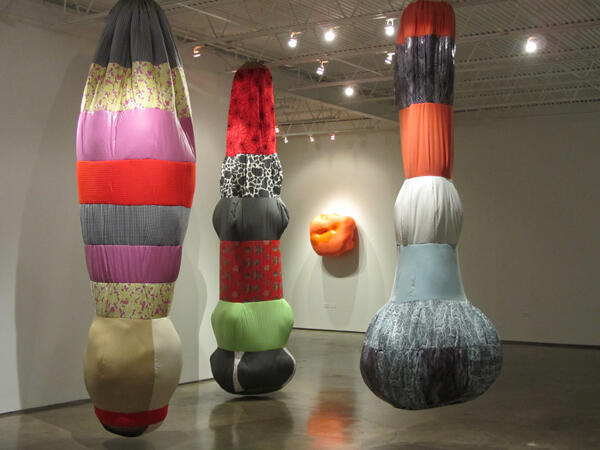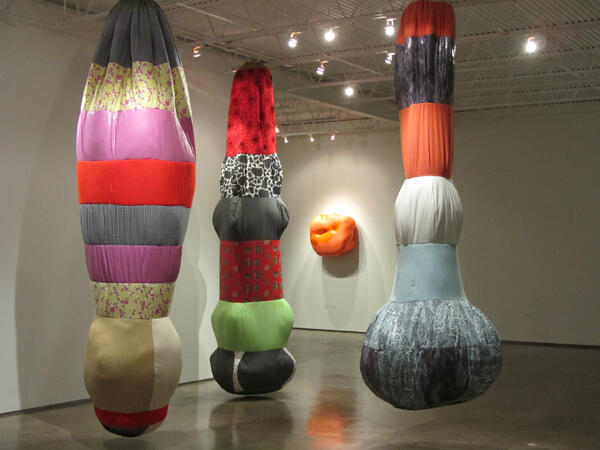Clemencia Labin
The New World Museum, Houston
The New World Museum of Houston is one of the city’s premier exhibition spaces. It is modern, tasteful, and although it has only one very spacious room, it lends itself perfectly for one-person shows.

Moreover, it has a very pleasant front lawn in which guests gather at every opening and enjoy free drinks and hors d’oeuvres. In the last few years the museum’s director, Armando Palacios, has made it a point to show the work of Latin American artists who have represented their countries in the Venice Biennial. The featured artist this fall is Clemencia Labin, who represented Venezuela last year.
Labin is from Maracaibo, one of the two most Caribbean cities of South America: a modern port with quaint architectural vestiges of a Spanish colony. These facts are germane to “White Gold” , Labin’s current exhibit at the NWM; the title alludes to cotton, and the synthetic filling present in many of Labin’s plush padded works. Labin was trained in New York and Germany. For over two decades she has been living in Hamburg. As she was looking to find herself as an artist, she confesses she was doing works using many grey and dark colors. One day she said to herself, “What am I doing? This is not who I am!”
In an interview she gave last year in Venice, Labin explained how rediscovering her home city of Maracaibo transformed her art practice. On a casual visit of the Santa Lucia neighborhood, she found a new palette in the bright colors of the houses’ facades. She bought a house there and since 2001 has been hosting an art festival called Velada Santa Lucía. The color palette in her current exhibit reflects the influence of that neighborhood on her art. These works were once described as Bolero Pulpa Chic, for its evocation of a fifties Latin aesthetic that still survives in working class neighborhoods throughout Latin America. Labin’s huge drop-like works hanging from the NWM’s ceiling are covered with fabrics one might find in the dresses, upholstery, or curtains in the Santa Lucía neighborhood. The lycra-covered assemblages that hang from the walls have the amorphousness of the improvised, while at the same time showing the inviting coziness of piled pillows. The touchy-feely materiality of these works is a far cry from anything Bauhaus –except for its abstractness.
The most admired piece in the exhibit was without a doubt the one cleverly featured in the menu of her website (http://clemencialabin.com/). This is a work that puts the viewer at odds as to whether he/she should find shapes —as if looking at a cloud (a bone, a fist, a mouth...) —, or simply wish to lie on it.
-
 Polyester cotton and fabric, 118 1/8 in. Columnas Hoda, Layla y Nazira, 2012.
Polyester cotton and fabric, 118 1/8 in. Columnas Hoda, Layla y Nazira, 2012.
Poliéster, algodón y tela, 300 cm.




